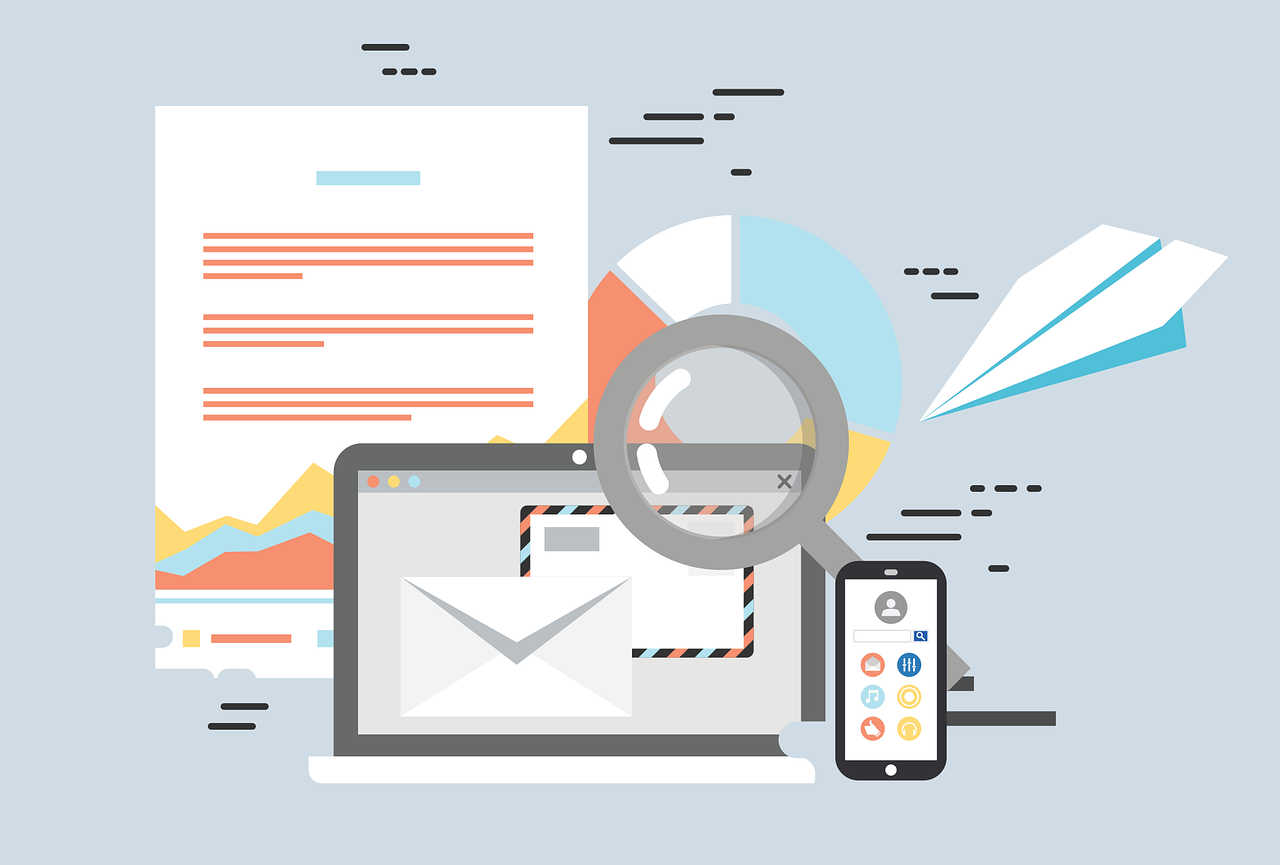In the realm of affiliate marketing, an email list is more than a collection of names and addresses; it’s your direct line to your audience’s inbox, and possibly their wallets.
Building an email list is one of the single most effective strategies for not only driving sales but also for establishing a loyal audience for any product or service being promoted. Just don’t focus too much on perfection; getting started is what counts.
Email marketing thrives not because it’s the newest tactic but because it has stood the test of time with an astonishing ability to adapt. It fosters a one-on-one conversation that few other platforms can offer, providing you with the chance to speak directly to the needs and interests of your subscribers. And if you’re concerned about the numbers, well, let’s just say that the numbers talk—and they’re in favor of using email as a powerful marketing tool.

Before I jump into the nitty-gritty of list building, I’m going to paint a picture of the groundwork you need. Ask yourself: Who is your target audience? What pain points are they facing that you can solve? How frequently should you send your emails without overstepping? Answering these will solidify the foundation you’re setting up for your email list—and ensure that your efforts resonate with the people on the other side of the screen.
Now that you’re geared up with the basics, it’s time to get familiar with the mechanisms of collecting emails. That’s where lead capture pages come into play, and they are the heart of the matter. A lead capture page does exactly what its name suggests—it captures leads. But what makes a lead capture page go from good to great? Stay with me, and we’re going to unravel the anatomy of lead capture pages that convert visitors into subscribers, cultivating the ground for your affiliate marketing success.
Understanding Lead Capture Pages
Let’s break down what lead capture pages are and why they’re a cornerstone of your email marketing toolkit. Essentially, a lead capture page, also known as a landing page or a squeeze page, is a standalone web page designed specifically to collect visitors’ contact information. This could be as simple as an email address or more detailed like a full name, phone number, and even personal preferences.

You might be wondering: what makes a lead capture page effective? It usually comes down to a few critical components. A compelling headline that grabs attention, a clear and concise message that communicates the value of the offer, and a strong call to action (CTA) that guides users on what to do next are non-negotiable elements. Plus, visuals play a big role too – a relevant image or a short video can significantly boost conversion rates, enticing visitors to leave their contact details.
And how can you maximize the effectiveness of these pages? Here’s where technique truly shines. For starters, by ensuring the lead capture page is focused on a single offer, you can keep potential subscribers from getting distracted. A/B testing different elements like headlines, CTAs, and layouts help identify what resonates best with your audience. Additionally, social proof such as testimonials or user count can encourage visitors to join the bandwagon and subscribe to your list.
Remember, the leads you garner from these pages are often the beginning of a potential customer’s journey. Improve the chances of a visitor becoming a lead with a page that is not only effective but also offers something of genuine value. That means you deliver on promises made on the lead capture page and start to build a relationship rooted in trust from the first interaction.
Techniques for Growing Your Email List
If you want to scale your affiliate marketing, you’re going to need a robust email list. Let’s talk about expanding that all-important subscriber base.
Content upgrades are your secret weapon. Choose something that resonates with your audience’s needs. Maybe it’s a comprehensive guide, a checklist, or even a video course. The goal is to provide immense value in exchange for their email addresses.

Opt-in forms and pop-ups can be highly effective, provided they’re used thoughtfully. I’m talking about timing pop-ups when users are likely to be more engaged, like after they’ve spent a certain amount of time on your site, or when they’re about to exit.
Your approach can always be refined based on the data you collect, so don’t worry too much about perfection at the beginning. Just get started and iterate from there.
Now, how about adding a human touch? Partner with influencers who believe in your message. They don’t just amplify your content; they lend their credibility to your cause.
Remember, building an email list is about nurturing relationships. When you move to the next step, which is aligning your email content with the interests of your audience, it’s these relationships that are going to matter the most.
Aligning Email Content with Audience Interests
You’re probably well aware that not all emails are created equal. To truly engage your audience, you need messages that hit home with their interests and needs. That’s going to include segmenting your email list.
Segmenting is simply breaking down your list into smaller, more focused groups based on specific criteria. This could be anything from geographic location to past purchases. By doing this, you can send more relevant and personal messages.
Now, let’s talk about content. Crafting compelling email content that resonates isn’t just about being a good writer. It’s also about understanding the pain points, desires, and language of your audience. Doing this well means your emails will be opened, read, and clicked through more often.
Regularly updating and cleaning your email list is just as crucial as creating the content. This isn’t just busywork; it helps maintain a high level of engagement by removing inactive subscribers who drag down your open and click-through rates.
Think of your email content as an ongoing conversation with your subscribers. It’s a two-way street. Encourage feedback and interactions to understand what they love and what could be better. Choose something that resonates with you and them, and the results will show in your campaign performances.
Analyzing Annual Data: Effectiveness of Email Marketing
Now, this isn’t just about setting up campaigns; it’s also about grasping their impact. You’re going to find out about the effectiveness of email marketing through the lens of annual data. It’s data time, and trust me, this is the stuff that can drive your strategy forward.

You might be wondering, ‘Do people even read emails anymore?’ Guess what? They do. Recent studies highlight that for every dollar spent on email marketing, you can expect an average return of $42. I’m talking serious bang for your buck.
In my opinion, those numbers aren’t just impressive; they are a clear signal you should keep email marketing front and center in your affiliate game plan. It’s one thing to send out emails. It’s another to send emails that people act on. Conversion rates from email marketing outperform those from social media often by a good margin. This means more clicks, and more importantly, more affiliate sales.
A big publisher or a small-scale blogger – it doesn’t matter. The effectiveness of email marketing spans the board. Companies of all sizes see the value because it works. It’s personalized, it’s direct, and you own it. Unlike social media platforms, your email list is a stable asset that isn’t swayed by algorithm changes.
You can always adjust your approach down the road by analyzing open rates, click-through rates, and conversion data. This includes tweaking your subject lines, email content or even send times. Armed with this knowledge, you’re geared to improve and optimize your campaigns over time.
I’ve personally seen the transformation in marketing campaigns that pay attention to these figures. It blew me away in terms of the quality of engagement and the sales numbers that followed. So don’t miss out on analyzing and acting on your email marketing data; it’s a gold mine.
Best Practices for Email Automation in Affiliate Marketing
I’m going to show you how leveraging the power of automation can massively streamline your affiliate marketing efforts. You’re going to find out about the key advantages that make email automation not just a ‘nice-to-have’, but a must-have in your arsenal.
CHECK OUT our Aweber Email Autoresponder Review
Now, what happens once you’ve captured leads? This is where setting up drip campaigns comes in. Think of drip campaigns as a series of emails that guide your subscribers on a journey through valuable content, offers, and insights related to your affiliate products.
Imagine sending out emails that feel like they’ve been tailor-made for each individual subscriber. That’s the power of personalization. I’m here to help you understand how to infuse that personal touch into automated emails, making your subscribers feel understood and valued.
Choose something that resonates with you — whether it’s celebrating subscriber milestones, sending birthday discounts, or delivering content based on user behavior. Personalization increases the chances that your subscribers will engage, click, and eventually make a purchase.
A lot is happening very quickly, and staying on top of every subscriber manually would be a Herculean task. That’s why the correct automation tools are not just time-savers; they can also provide valuable insights into subscriber behavior, campaign performance, and more.
I’d love to hear your thoughts on email automation. Have you found a strategy that works wonders for your affiliate marketing? Share your experiences, because the best learning often comes from the community.
Legal Considerations and Ethical Practices
Now, I’m going to clue you in on how crucial it is to play by the rules in the game of email marketing. It’s not just about building a massive list; it’s about doing it right. Let’s talk legal for a moment. You have to be familiar with laws like CAN-SPAM in the U.S. or GDPR if you’re dealing with European audiences. These laws dictate how you collect and handle personal information – ignore them at your peril.
You’re going to learn that securing subscriber data is not just a good practice, it’s expected by your audience. Put proper safeguards in place to keep their information private. This becomes part of your brand’s reputation; trust me, it pays off in the long run.
I can’t emphasize enough the importance of transparency and ethical practices in your email campaigns. Clearly state what subscribers are signing up for, make it easy to unsubscribe, and never, ever, sell their information without consent. Consent is the cornerstone of ethical email marketing.
In essence, when you adopt ethical practices and comply with legal standards, your email list turns into a trusted community. That’s a solid foundation not just for affiliate marketing, but for any form of digital marketing. Choose something that resonates with trust and reliability, and your affiliate activities will thrive on that trust.
Conclusion
I really hope that you’ve found this guide enlightening and feel ready to start building your own email list for affiliate marketing. Remember, your first attempt doesn’t need to be your last. You can always adjust your approach down the road, as long as you keep the trust of your subscribers as your North Star.
If you are ready to read about solution providers for email marketing be sure to check out our Aweber Email Automation Review.







